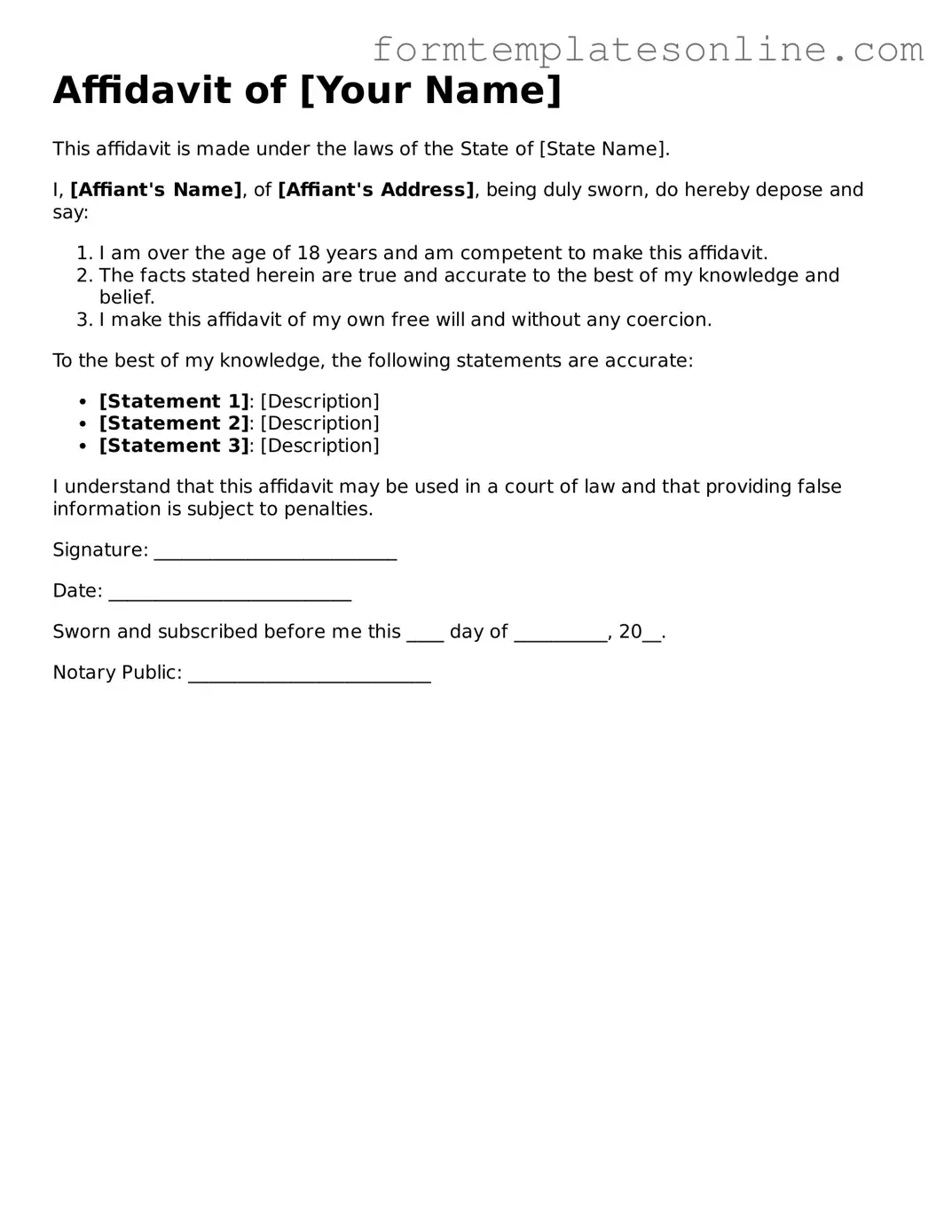What is an affidavit?
An affidavit is a written statement that is confirmed by the oath or affirmation of the person making it. This document is often used in legal proceedings to provide evidence or to affirm the truth of certain facts. It is signed in the presence of a notary public or other authorized official.
When do I need to use an affidavit?
You may need to use an affidavit in various situations, such as during court proceedings, to verify facts in legal documents, or to provide proof of identity. Common uses include divorce proceedings, property disputes, and business transactions.
How do I create an affidavit?
To create an affidavit, begin by writing a clear statement of the facts you wish to affirm. Include your name, address, and any relevant details. After drafting the document, you must sign it in front of a notary public or authorized official, who will then add their signature and seal to validate the affidavit.
Do I need a lawyer to create an affidavit?
While it is not mandatory to have a lawyer draft your affidavit, consulting one can be beneficial. A lawyer can ensure that your affidavit meets legal requirements and effectively supports your case.
What is the difference between an affidavit and a declaration?
An affidavit is a sworn statement made under oath, while a declaration is a statement made without an oath. Both serve similar purposes in legal contexts, but the key difference lies in the requirement of an oath for affidavits.
Can I change an affidavit after it has been signed?
Once an affidavit is signed and notarized, it cannot be altered. If you need to make changes, you will have to create a new affidavit that reflects the updated information. It is crucial to ensure that the new affidavit is properly executed.
Is an affidavit legally binding?
Yes, an affidavit is legally binding. By signing an affidavit, you are affirming that the information provided is true to the best of your knowledge. Providing false information in an affidavit can lead to serious legal consequences, including charges of perjury.
How long is an affidavit valid?
The validity of an affidavit depends on the context in which it is used. Some affidavits may have specific time limits, while others remain valid indefinitely. It’s essential to check the requirements relevant to your situation.
Can I use an affidavit in any state?
Affidavits can generally be used in any state, but the format and requirements may vary. It is important to follow the specific rules and regulations of the state where the affidavit will be submitted or used.
What should I do if I need to submit an affidavit?
If you need to submit an affidavit, ensure it is properly completed, signed, and notarized. Check the requirements of the court or agency to which you are submitting the affidavit to ensure compliance. Keep a copy for your records as well.
